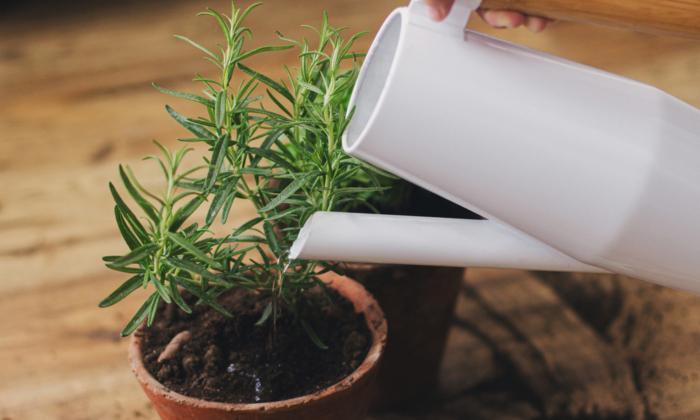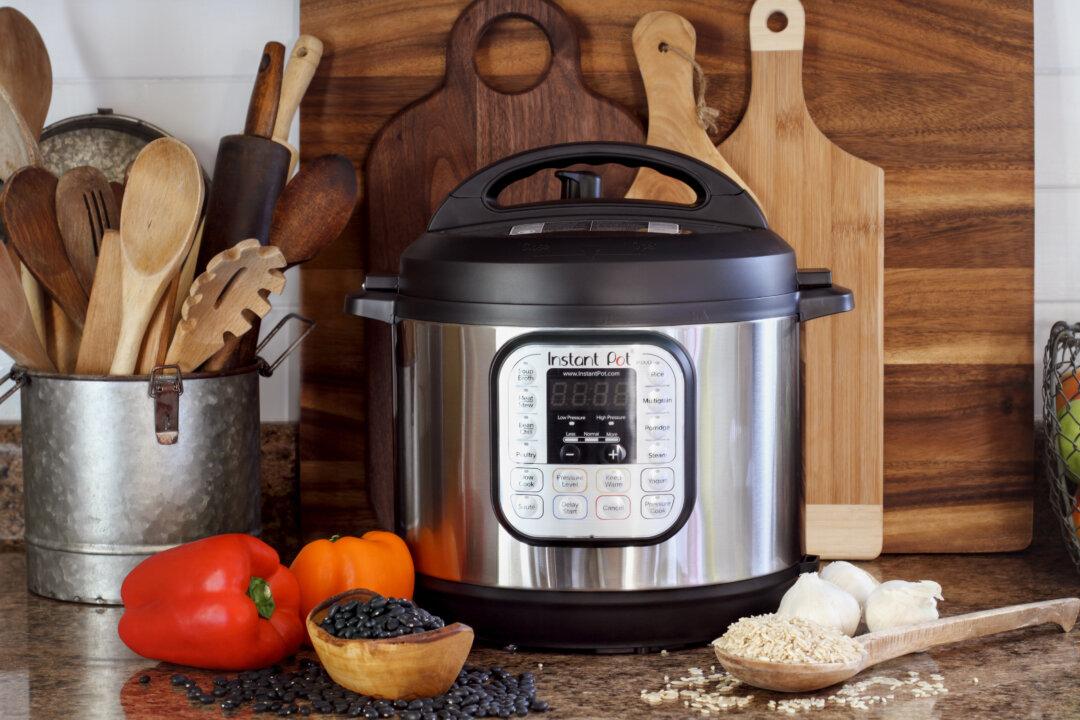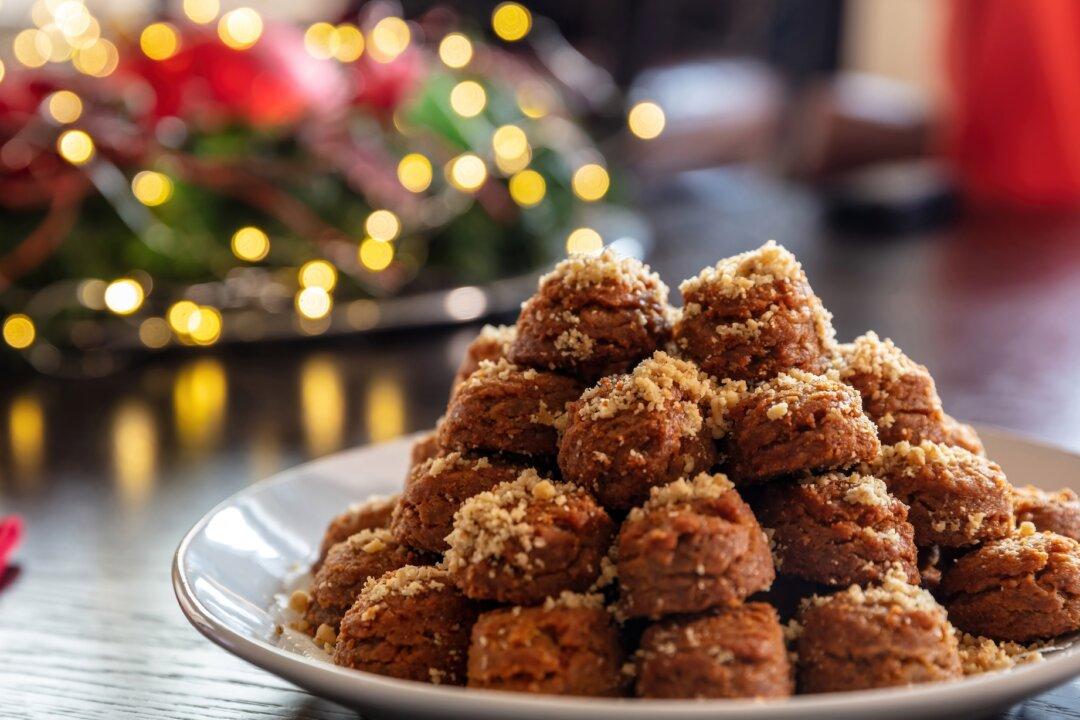Growing Herbs
Herbs can be grown in a separate part of the garden—preferably near the kitchen—or they can be grown in pots or containers or with other flowering plants. They like a sunny place and light, fertile, well-drained soil, but they are generally hardy enough to be grown in most soil. Herbs are short-term plants—some are annuals and must be planted each season from seed. The perennials will need to be renewed every two to three years.
1. Basil
Basil, also called sweet basil, is a pleasant-smelling annual plant with a spicy taste. The leaves are light-green, tender, and smooth. Basil grows well in the garden or as a potted plant. Cooks favor it for all kinds of tomato dishes. It can also be added to soups, vegetables, and Italian dishes. Start basil in pots indoors or outdoors if the soil temperature is above 50°F/10°C. Cover seeds with fine soil, to a depth of only ⅛“ (3 mm). Gently press down the soil over seeds and water with a fine spray. Seeds should germinate in one to two weeks. Keep the soil moist. Shade young basil plants if the weather is sunny, as they wither easily. Thin seedlings by cutting unwanted plants off at the soil surface with scissors. Basil plants should eventually be planted 12”– 18“ (28–45 cm) apart. After seedlings are 6” (15 cm) high, pinch off the tops for bushier plants. Harvest basil leaves regularly. Water and fertilize the plants frequently. Pinch off the flowers to keep the plant from going to seed.
2. Bay Leaf
Bay is a large herb plant that grows into a small tree or tall evergreen bush. Its aromatic leaves are used to garnish pâté, in fish dishes, or in a bouquet garni to flavor soups and casseroles.
3. Chervil
Chervil is a white-flowered, hardy annual raised from seed. Its foliage is similar to parsley and it likes a shady area. It has a delicate, slightly spicy fragrance and can be used in soups, sauces, savory butter, and potato salad.
4. Chives
Chives are small perennial, onion-like plants that grow in a clumping fashion. In early spring the leaves are topped with purple flowers. Plants can be purchased or grown from seed. Established clumps can be divided and transplanted. Garlic chives are similar in appearance to regular chives but have a slightly garlicky flavor. Use chives fresh, cut off from the plant as required, to give a mild onion flavor.
5. Dill
Dill is an annual herb whose leaves and seeds are popular flavorings for pickles, cucumber, and fish dishes. It is a tall plant with small yellow, umbrella-shaped flower heads and feathery foliage, similar to fennel. Dill seeds can be planted in the autumn or early spring.
6. Fennel
Fennel is similar to dill but is perennial and hardier. However, the plants can become very large, so it is best to grow annually. It will self-seed freely. The leaves and bulb have an aniseed flavor. Use the leaves with fish and the seeds with eggs, cheese, vegetables, and in cakes.
7. Lemon Balm
Lemon balm is a lemon-scented plant used in iced drinks and hot teas. It spreads rapidly so it should be planted in a container in the ground or frequently cut. Growing to a height of nearly 2' (60 cm), its oval leaves have slightly serrated edges and clusters of small white flowers. Start from seed or small plants. It will self-seed or can be propagated by root division.
8. Mint
Mints such as peppermint and spearmint are hardy perennials used to make herbal tea, flavor drinks and liqueurs, and to make mint sauce. Mints are the easiest to grow perennial herbs. They grow profusely in sun or shade. Plant in moist soil in sunken pots in the garden to stop spreading. Use the leaves and flowering tops both fresh and dried.
9. Oregano or Marjoram
These can be grown from seed sown in the spring or propagated by cuttings. They are low-growing, clump-forming, slightly woody perennials. Shoot cuttings can be taken in late summer and the plant should be replaced every two to three years. Cut the tender tops of both herbs just as flowers begin. Add oregano to Italian-type sauces, pizza, and meats. Marjoram can be used in stuffing or for flavoring meats, and it enhances mushroom soup.
10. Parsley
Parsley is a very popular mild-flavored herb. It is a densely leafy biennial, but is best grown annually from seed. There are curly and flat-leafed varieties. The curly is popular for its appearance, but the flat-leafed has a stronger flavor. It can be slow to germinate, but watering with hot water after planting the seeds can speed up the process. Once the leaves appear, it grows rapidly. It’s regularly used as a garnish and for flavoring a wide variety of meat and vegetable dishes.
11. Rosemary
Rosemary is an evergreen bush with leaves like long, oval pine needles. It should be trimmed frequently or renewed every few years or it will become straggly. Since it is a tender plant, it should be brought indoors during the winter. The plant can be started from seed or propagated from a cutting. Purchased plants should be about 12” (28 cm) tall. It is highly aromatic and used to give added flavor to lamb, poultry, and roasted vegetables.
12. Sage
Sage is a woody perennial growing to about 2' (60 cm) in height. It has gray-green soft, furry leaves and blue flowers. Cut the plant back after the flowers are gone. It can be started from seed or propagated from cutting, layering, or root division.
13. Tarragon
Tarragon has delicate upright shoots with soft, narrow, willowlike leaves. It is excellent for flavoring salad dressing, chicken, and fish. It is best starting with a plant, but can be propagated by cuttings or root division. Should be brought indoors during the winter or else well covered outdoors.
14. Thyme
Thyme is a shrubby perennial herb. It is a small plant with very tiny gray-green leaves. Purplish flowers are formed on the ends of the stems. New plants can be started from seed (indoors), cuttings, or root division. For best growth, thyme should be replanted every three to four years. To use, remove the top one-third portion of the plant when in full bloom and spread on newspaper to dry. Then strip the leaves and flowering tops from the stem and store in tightly closed containers. Use in stuffings and meat dishes.
Natural Insect Control

Before using any homemade spray, always pretest on a small area of the plant to make sure it will not harm it.
Aphids
To control aphids: chop up a few garlic gloves, one large onion, and a few chive leaves and place in a blender. Fill the blender half full with water. After blending the ingredients well, strain to form a clear solution and discard the pulp. Add additional water to make 1 gallon (5 liters) of spray. When using on plants, make sure to spray the undersides of the leaves where the aphids hide. This spray will kill the aphids but not harm other beneficial insects. It also helps to control whiteflies.
For organic insecticide spray, boil a whole bulb of chopped garlic until it’s soft. Put it into 1 gallon (5 liters) of water and add 1 tablespoon of biodegradable detergent. Leave for a day, strain, and use as required.
Wireworms, Slugs, Caterpillars, and Weevils
Garlic spray for wireworms, slugs, caterpillars, and weevils: chop 3 ounces (75 grams) of garlic and mix with 2 teaspoons of mineral oil. Leave for 24 hours then add 1 pint (500 ml) of water with 2 teaspoons dissolved soap added. Stir well and strain into a plastic container. To use, dissolve one part of the mixture with twenty parts water and spray onto the leaves of affected vegetables and the surrounding soil.
Insect Repellant Spray
Mix together garlic, onion, lavender leaves or flowers, yarrow, and mint with just enough water to mix. Leave standing at room temperature for 24 hours in a closed container. Strain and add a few drops of detergent to help its ability to stick to the plants. Then add an equal quantity of water and spray as required.
Rhubarb Aphid Spray
Chop six to seven green leaves of rhubarb and boil in 4 pints (2 liters) of water for 30 minutes. Strain and cool. Add a few flakes of soft soap and use as required.
Tobacco Spray for Aphids, Bugs, and Small Caterpillars
Take 5 grams of tobacco (approx. one to two large pinches) and pour over 2 pints (1 liter) of boiling water and let boil for 15 minutes or until the brew looks the strength of weak tea. Let it cool and strain. It is best to use this fresh, but it can be kept for a few days.
Cucumber Beetles
Repellent for cucumber beetles: mix a handful of wood ash with a handful of hydrated lime and 2 gal (10 ltr) water. Mix well, then with a spray bottle, spray both sides of your cucumber leaves.
Powdery Mildew
To get rid of powdery mildew from cucumber or strawberry plants, mix 0.2 oz (6 g) baking soda (bicarbonate of soda) with 1 gallon (5 liters) of water. Using a spray bottle, spray on leaves weekly to rid the plants of mildew.
Instead of using chemicals on mildewed plants, make a solution of 90 percent water and 10 percent fresh milk and spray it onto the plant. Enzymes in the milk will attack the mildew. Don’t go over 30 percent milk or you may end up with foul-smelling plants.
Spray milk on apples and lettuce to control mildew. For large areas, dilute one part milk in nine parts water.
Natural Weedkiller

To kill weeds without using harmful chemicals, fill a spray bottle with vinegar and zap the weeds with it. Just make sure not to spray your nearby crops. This will work on weed seedlings as well as full grown plants. For particularly tough weeds, use cider vinegar, which has a higher acidity.
To help weed easily between slabs or crazy paving, pour on the slightly salted boiling water after cooking potatoes. Even dandelions soon go after a couple of treatments.
Black Spot Disease
To rid roses of black spot disease, mix 1 tablespoon baking soda, 1 tablespoon vegetable oil, and 1 tablespoon liquid dish soap in 1 gallon (5 liters) of water and spray on the roses once a week.
Mary Rose Quigg is a bestselling author with over 500,000 copies of her books in print. She raised five children in Co Cork, Ireland while working as a cook in several restaurants. Over the years she accumulated a collection of hints and tips from friends and family, especially her mother. Over a decade ago she moved with her husband and two children to France where they run a busy restaurant in the picturesque countryside.








